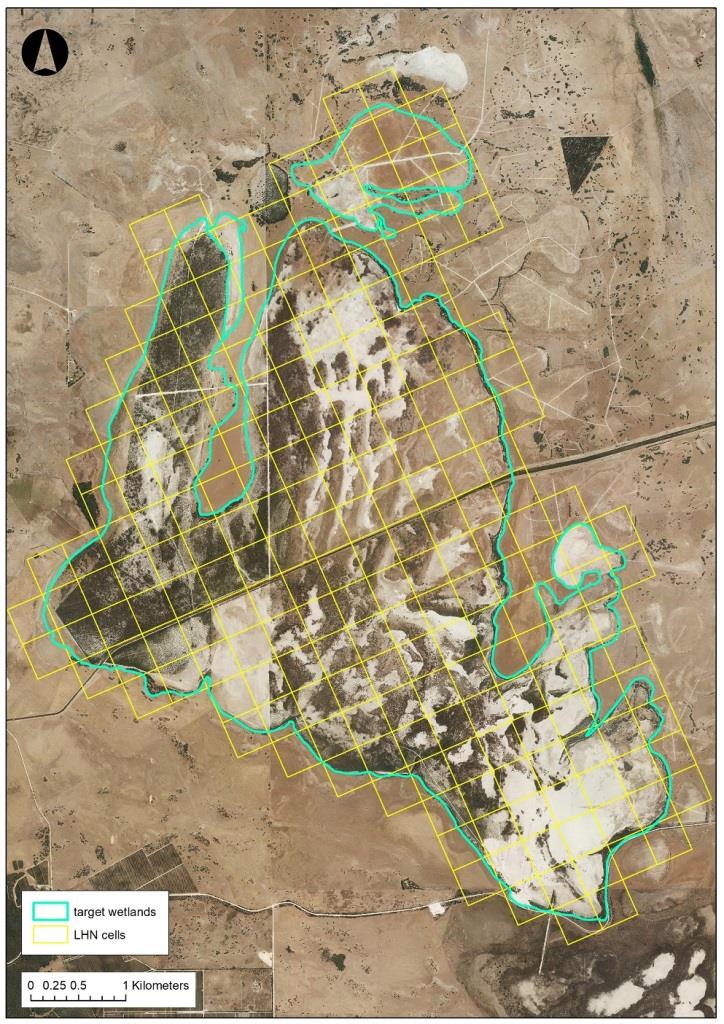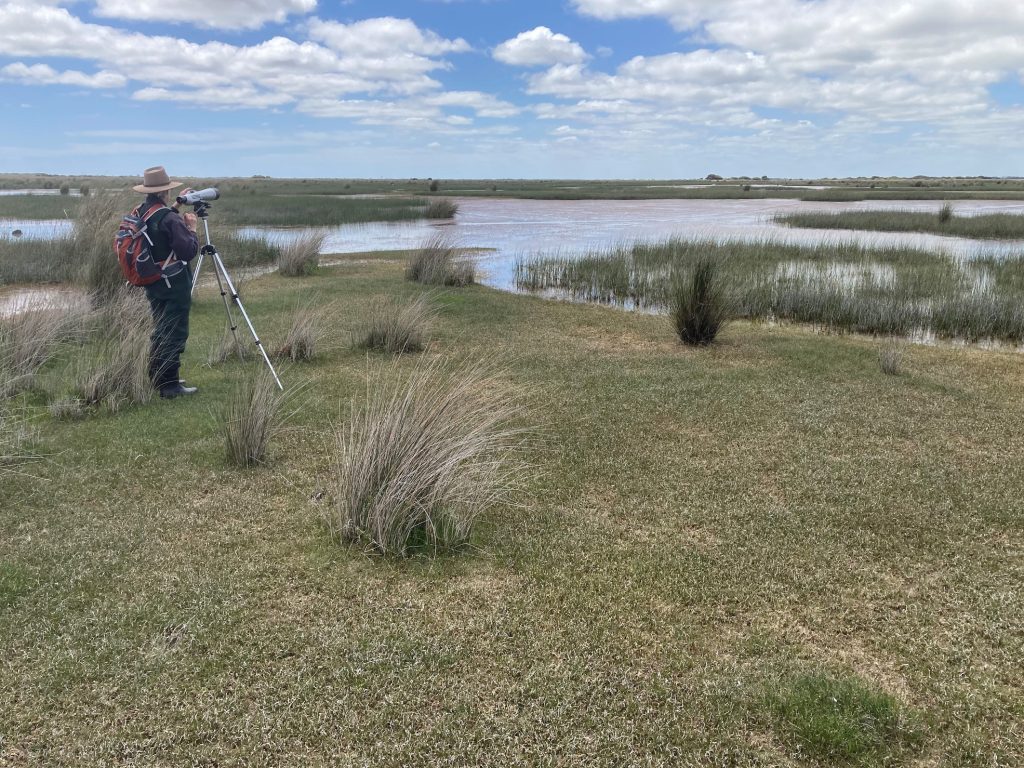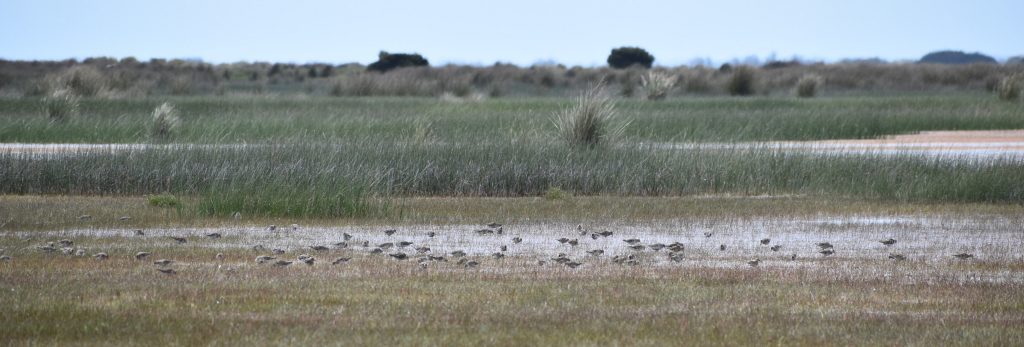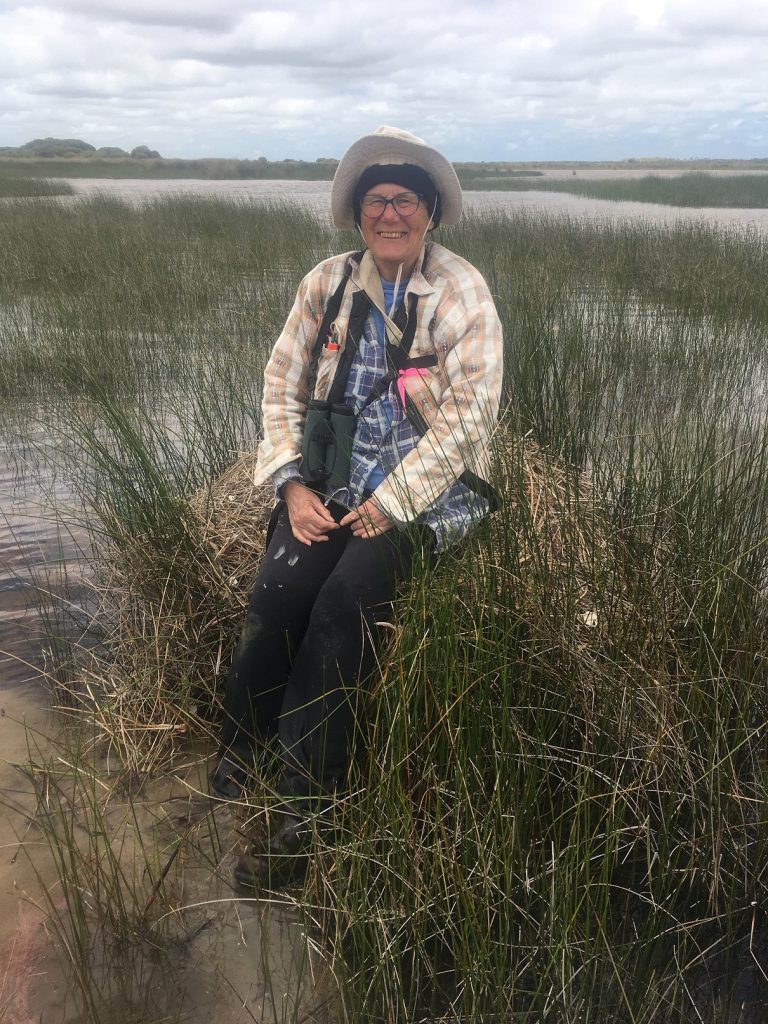First ever comprehensive waterbird census of Lake Hawdon North completed
Over the 9th and 10th November, with help from Friends of Shorebirds SE (FoSSE) and the University of Adelaide (UofA), NGT undertook the first ever comprehensive waterbird census of Lake Hawdon North in the South East of SA. At over 2,500 hectares in size, and long recognised as a regionally significant wetland, this survey was long overdue! NGT was engaged to do this work through the Healthy Coorong, Healthy Basin On Ground Works project, investigating the feasibility of wetland restoration work at Lake Hawdon North.
The census targeted shorebirds and waterfowl and focussed on the habitat types favoured by these guilds; that is, open water and shallow mudflat habitats. We also opportunistically counted birds within the other habitats of this wetland, such as swamp paperbark shrublands and Gahnia sedgelands, but confident counts were obtained only for the species favouring open water and mudflats.

To understand how waterbirds are using Lake Hawdon North we divided the wetland into 220 “cells”, each 400 by 400 m in size, and obtained a count for each. The cells were aligned so that none straddled Drain L, which runs through the central wetland from east to west, to make counting easier. The census included a wetland immediately north of Lake Hawdon North that is hydraulically connected to it much of the time.
Our team of surveyors covered many kilometres on foot, carrying spotting scopes and wearing waders as approximately 40% of the wetland was inundated at the time of the survey. It was tough work but also rewarding to get out and see this expansive and under-studied site up close.


The census recorded 69 bird species, of which 28 were species of open water and mudflats – and for which confident counts were obtained, and 41 other species were recorded opportunistically.
| Species counted | |
| Australasian shoveler | 22 |
| Australian shelduck | 2786 |
| Australian white ibis | 11 |
| banded lapwing | 5 |
| black swan | 159 |
| black-winged stilt | 1313 |
| Caspian tern | 1 |
| cattle egret | 2 |
| chestnut teal | 116 |
| common greenshank | 47 |
| great cormorant | 2 |
| great egret | 2 |
| grey teal | 1394 |
| hardhead | 6 |
| hoary-headed grebe | 11 |
| little egret | 27 |
| masked lapwing | 153 |
| musk duck | 5 |
| Pacific black duck | 330 |
| pink-eared duck | 2 |
| red-capped plover | 140 |
| red-necked stint | 331 |
| royal spoonbill | 1 |
| sharp-tailed sandpiper | 674 |
| silver gull | 702 |
| straw-necked ibis | 1 |
| whiskered tern | 1834 |
| white-faced heron | 123 |
| Species recorded opportunistically | |
| Australasian pipit | |
| Australian hobby | |
| Australian magpie | |
| Australian raven | |
| beautiful firetail | |
| black-tailed native-hen | |
| brown falcon | |
| brown songlark | |
| brown thornbill | |
| collared sparrowhawk | |
| common blackbird | |
| common bronzewing | |
| common skylark | |
| common starling | |
| crested pigeon | |
| emu | |
| European goldfinch | |
| galah | |
| golden whistler | |
| golden-headed cisticola | |
| grey butcherbird | |
| grey currawong | |
| grey fantail | |
| grey shrike-thrush | |
| Horsefield’s bronze-cuckoo | |
| little grassbird | |
| little raven | |
| magpie-lark | |
| Nankeen kestrel | |
| raven sp. | |
| silvereye | |
| singing honeyeater | |
| spiny-cheeked honeyeater | |
| striated fieldwren | |
| superb fairy-wren | |
| swamp harrier | |
| wedge-tailed eagle | |
| welcome swallow | |
| white-browed scrubwren | |
| white-fronted chat | |
| willie wagtail |
These numbers provide a baseline against which we can compare future surveys under similar water levels and/or time of year. If the restoration of Lake Hawdon North is undertaken, subject to current feasibility investigations, a comparison of these waterbird abundance data with future surveys post-restoration will provide one measure of restoration outcomes.
NGT is very grateful for the assistance provided by FoSSE and UofA. Thank you:
- Maureen Christie (FoSSE)
- Vicki Natt (FoSSE)
- Cath Bell (FoSSE)
- Holly Prest (FoSSE)
- Josie Doyle (FoSSE)
- Graham Doyle (FoSSE)
- Micha Jackson (UofA)

This project is part of the South Australian Government’s Healthy Coorong Healthy Basin Program which is jointly funded by the Australian and South Australian governments.
